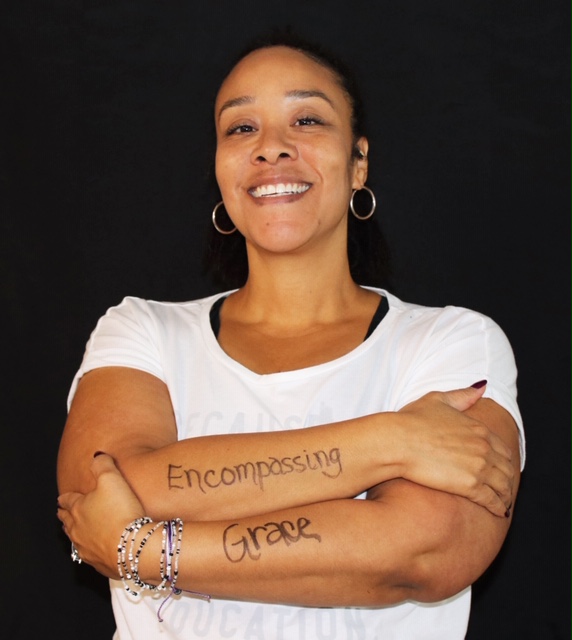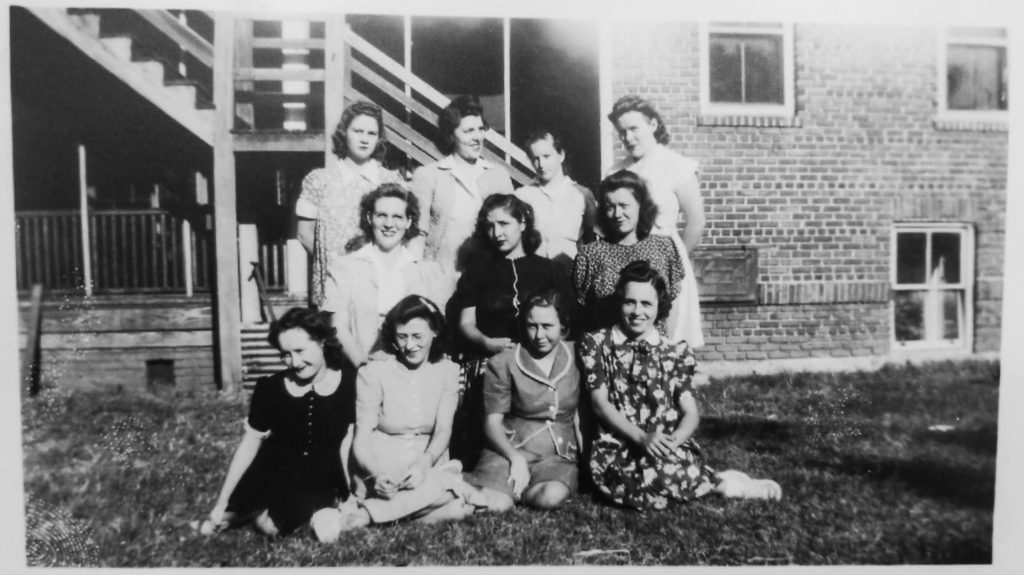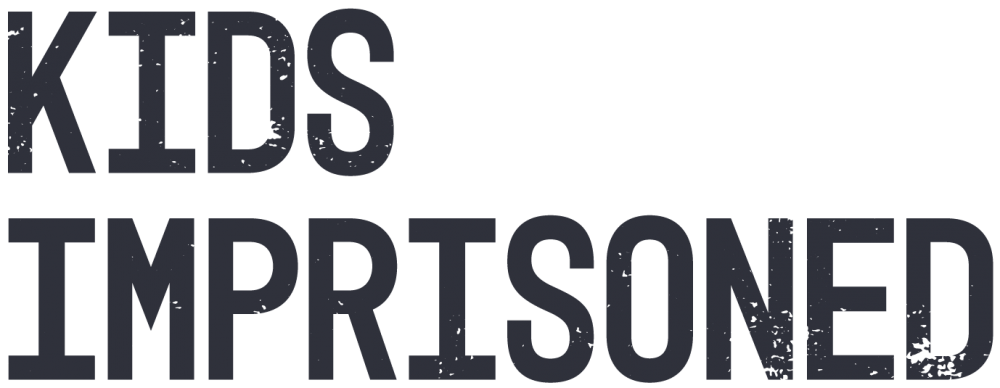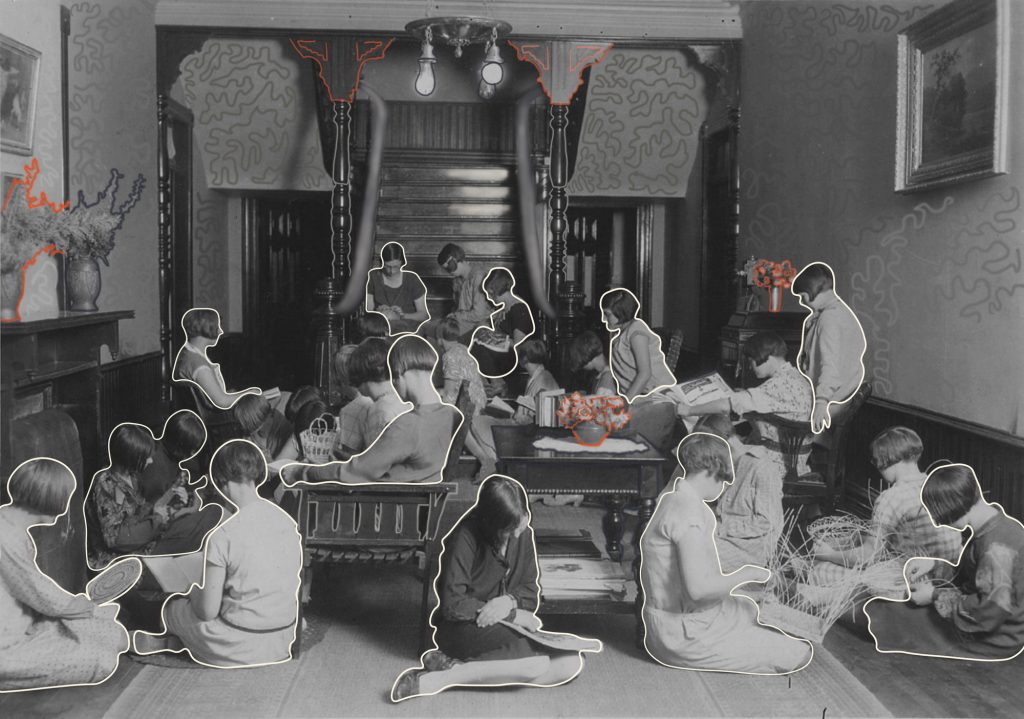Photo illustration by Nicole Sroka
Raised by a teen mother, becoming a teen mother herself, and with a brother in prison, statistically, Charese Jamison narrowly missed the juvenile justice system.
Instead, she became one of an estimated 10 million girls helped by National Crittenton, an 137-year-old girls-centered nonprofit organization, now based in Portland, Oregon.
Jamison, a resident of Utah, was helped by her local Crittenton agency in West Virginia as a teenager.
Now, Jamison travels across the nation, speaking to members of Congress, donors and at-risk girls navigating the same childhood challenges she did, advocating on behalf of National Crittenton, the group that helped her change course nearly three decades ago.
Founded in 1883, National Crittenton was the first group to open its doors to young women pushed to the edges of society, providing a safe place to sleep, community and emotional support. National Crittenton still wrestles against the risk factors — sex trafficking, domestic violence and poverty — that drove girls into the juvenile justice system more than a century ago, and still do today, but now without federal funding to fuel its cause.
“I thought we’d be further along in terms of social justice, but we’re really not,” said Jeannette Pai-Espinosa, the organization’s president.
Girls account for nearly 30% of youth in the juvenile justice system, the majority of whom are arrested for nonviolent crimes – theft, simple assault and disorderly conduct, according to a 2015 study by the Office of Juvenile Justice and Delinquency Prevention.
In 2013, National Crittenton worked alongside various states to address the needs of incarcerated girls with the hope of keeping them out of the juvenile justice system altogether. The nonprofit introduced trauma programs, conducted research and provided facility recommendations to keep girls out of the juvenile justice system, until its government funding was suddenly cut off under the new administration in 2017.
National Crittenton now operates on private grants to maintain its progress, Pai-Espinosa said. While the nonprofit once advised facilities directly, it now helps other nonprofits with similar philosophies on how to continue what it started. In its advocacy, National Crittenton looks to its 31 independently-run local agencies across the country, encouraging young women in their own communities to share stories and spur widespread change for girls.
“There was a growing recognition that the girls [states saw] in the juvenile justice system, by and large, pose little risk to public safety and really are victims as much as anything else,” Pai-Espinosa said.
Sexually abused at a young age, Jamison, now 43, said she was severely depressed by age 10, attempted suicide at age 13, pregnant at 16, and a few months later, was homeless. This was the moment a music teacher at her high school showed her love, kindness and pointed her to the Crittenton agency in West Virginia.

“I could have been one of those kids that went to juvenile detention.”
Charese Jamison, now an advocate for at-risk girls. (Photo courtesy of Charese Jamison)
“If Crittenton had not come into my life, I could have been one of those kids that went to juvenile detention for minor crimes,” Jamison said. “And if I would have wound up in detention, my kid would have probably wound up in the foster care system, and you can just paint the picture of what would have been.”
Though the number of adolescents in the juvenile justice system has decreased in the past two decades, the percentage of incarcerated girls has been steadily rising, according to Girls in the Juvenile Justice System, a 2015 report from the Office of Juvenile Justice and Delinquency Prevention. The findings indicate that young women in the system often experience multiple forms of childhood trauma including exploitation and abuse prior to their arrest, which Pai-Espinosa said has increased among girls and at a younger age.
A 2015 survey conducted within 18 of its agencies found that Crittenton’s young women were similarly impacted by repeated exposure to childhood trauma including emotional and physical abuse, neglect, family dysfunction and trafficking — the same experiences that make youth, particularly young women, vulnerable to the juvenile justice system, and are nearly identical to the top risk factors identified in data by National Crittenton in 1900.
Six months into her pregnancy, Jamison was welcomed into a Crittenton home on Christmas Day where she stayed for 18 months. She learned how to care for herself, her child, and years later, how to use her voice to empower others, too.
At 31, Jamison was invited to Washington, D.C., by Pai-Espinosa to speak in front of an audience of 300 people. Young girls, donors, National Crittenton advocates and members of Congress listened as Jamison told her story.
“I was raised to believe in God,” Jamison said. “I remember praying, ‘Someday I’m going to tell my story and help other little girls.’ When I got up there to speak, it was that moment I prayed for at 9 years old.”
Jamison traveled for nearly 10 years, advocating for teen mothers and children in the foster care system, finding new depths to her own healing process through sharing her past.
Knowing what drives girls into the juvenile justice system in each state is the only way to stop the multitude of pipelines that target girls, and disproportionately, girls of color, Pai-Espinosa said. Now, without additional funding, “there’s simply no money to do that,” Pai-Espinosa said.
The number of regions National Crittenton once advised has since dropped from over 12 to four.
Though it is commonly known for supporting young mothers, National Crittenton’s reach extends much further, serving survivors of abuse, neglect, trafficking, addiction and more.
Less than 40 years after the women’s suffrage movement and before the 19th Amendment passed, National Crittenton was founded in 1883 by two friends and advocates, Dr. Kate Waller Barrett and Charles Crittenton. Barrett, a women’s physician, and Crittenton, a self-made millionaire influenced by missionary work and his daughter’s untimely death, defied social norms to acknowledge disadvantaged women who were otherwise forgotten.

Today, Dr. Kate Waller Barrett and Charles Crittenton’s great-great-grandchildren, Charles Baldwin and Kate Rademacher, continue their namesakes’ work as board members of National Crittenton.
“Her legacy is very much alive,” Rademacher said of her great-great-grandmother. “But I’m sure she would be deeply saddened and troubled by how much more we have to do and how in some ways, a lot of the same problems are just as pronounced as they were then.”
Pai-Espinosa said the organization is emboldened by the current social climate, which is asking for more focus on the underserved and those who have endured trauma and injustice.
“For a long time, we operated in silence,” Pai-Espinosa said. “That’s changed in the last 10 years, but it’s really changing now.”
Lead source photo courtesy of National Crittenton
Haillie Parker is a San Diego native and a master’s student at the Walter Cronkite School of Journalism and Mass Communication at Arizona State University. After earning a bachelor’s degree in film from ASU in 2015, she then worked as an actor for the Walt Disney Company. Since joining the Cronkite School, Parker has reported stories of everyday people — stories rooted in emotion and human connection. She has interviewed psychic healers in Sedona, Arizona, and traveled to one of the southernmost parts of Panama to report on the struggles of pregnant migrants on their way to the U.S.


